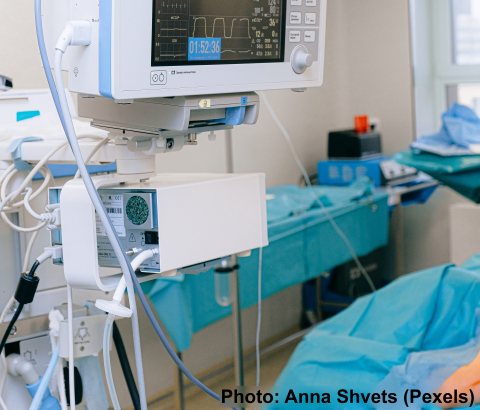Severe COVID-19 patients have unique antibody signatures

While some COVID-19 patients can get very sick, others have barely any symptoms at all. Many scientists have been searching what causes these differences. A collaborative study between scientists at Stanford University and the Proteomics and Metabolomics Facility at the Cornell Institute of Biotechnology found that mildly and severely ill patients had different antibody signatures. The researchers hope their findings will help predict which people are at risk of developing severe COVID-19.
The study focused on a specific type of antibody called immunoglobulin, or IgG. IgGs are the main type of antibody involved in immunity against viruses. In humans, they come in four subclasses (IgG1, IgG2, IgG3, and IgG4), and each subclass has different properties and functions in the immune function.
The role of the Proteomics and Metabolomics Facility, directed by Sheng Zhang, was to measure the abundance of each IgG in patient’s samples using the advanced liquid chromatography (LC) and mass spectrometry (MS) equipment available at the facility. Zhang and his team also analyzed a specific region of IgGs called Fc where molecules called N-glycans are attached. These Fc N-glycans exist in different forms, each of which slightly changes the way IgGs interact with immune cells, and therefore modulate the immune response.
One of the study’s main discoveries is that patients who were treated in intensive care units had elevated IgG3. They also discovered that one of the N-glycan forms, the afucosylated IgG1 glycans, was increased in patients with severe COVID-19 compared to those with mild or no symptoms. Both IgG3 and IgG1 with afucosylated Fc N-glycans are known to stimulate the body’s inflammatory response to an infection.
“The most difficult analytical challenge was that there are more than a dozen different glycans in each IgG subclass with a very wide range of abundance,” says Zhang. “This required some substantial upfront sample preparation and optimization of the analysis.“ In addition, Fc N-glycans have similar biochemical properties, and are difficult to separate on the LC-MS instruments.
Besides scientific challenges, Zhang is grateful to have met few practical obstacles. When the Stanford team contacted him at the beginning of April 2020 when Cornell was in lockdown, they needed to know urgently if he could analyze the COVID-19 samples. “Luckily we got strong support from Matt DeLisa and Biotech leadership who helped us get approval by university COVID-19 essential committee,” says Zhang.
Zhang’s previous experience of the subject was also an asset. “We have been working on this type of analysis for the past 7 years and we have stocked all the reagents and suppliers for the analysis,” says Zhang. “So, fortunately the negative impact of the pandemic was minimal.”
The Stanford and Cornell teams are trying to determine whether these Fc structures can be used as a biomarker to assess a person’s risk to develop severe COVID-19. “This is always a great feeling and thrill as a an analytical scientist when we found something we are able to contribute to society,” says Zhang.
The original study was published on November 9, 2020, in Nature Immunology https://www.nature.com/articles/s41590-020-00828-7
